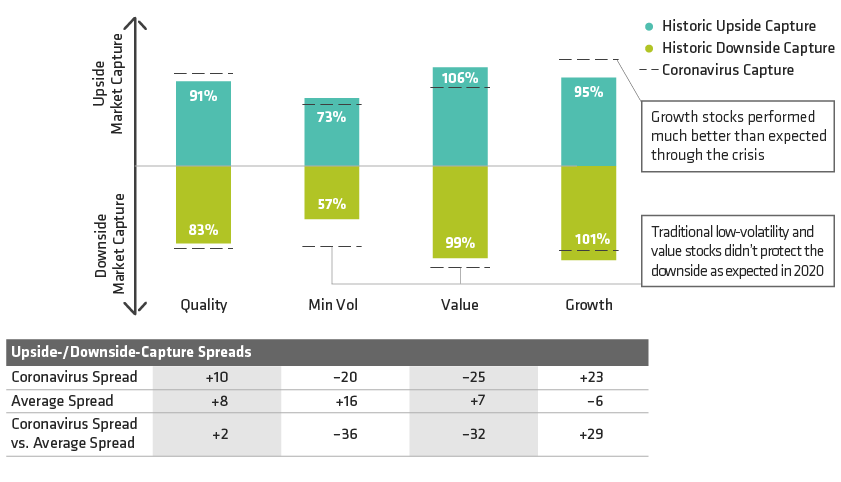-
The views expressed herein do not constitute research, investment advice or trade recommendations and do not necessarily represent the views of all AB portfolio-management teams. Views are subject to revision over time.
Capturing the Ups and Downs in Coronavirus Equity Markets

Past performance and current analysis do not guarantee future results.
As of June 30, 2020
Upside-/Downside-market capture calculated by dividing MSCI factor index return by MSCI World Index return. Average downside capture calculated using returns during the following periods. Average upside capture represents the three-month forward return from each period’s trough. Coronavirus (from February peak): February 19, 2020—March 23, 2020. Prior crises include: Rising Rates + Slowing Growth in China and Europe: September 2018—December 2018; Inflation + Fed Tightening: January 2018—March 2018; China’s Economy + Plummeting Oil Price: November 2015—February 2016; Greece + China Stock Market Crash: July 2015—September 2015; Concerns About Europe: May 2012—June 2012; Eurozone Debt Fears III: October 2011—November 2011; Eurozone Debt Fears II: May 2011—October 2011; Eurozone Debt Fears I: April 2010—May 2010; Global Financial Crisis: May 2008—March 2009; SARS: November 2002—March 2003; 2000 Tech Crash: March 2000—October 2002.
Spread is measured as upside capture minus downside capture.
Quality is represented by MSCI World Quality; Min Vol by MSCI World Minimum Volatility; Value by MSCI World Value; and Growth by MSCI World Growth.
Source: MSCI and AllianceBernstein (AB)
Balancing Global Equity Returns with Downside Mitigation for a Smoother Investment Journey
Capital at Risk
-
MSCI makes no express or implied warranties or representations, and shall have no liability whatsoever with respect to any MSCI data contained herein.
